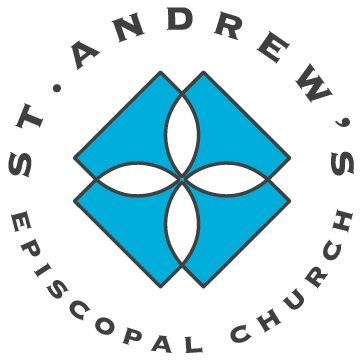December 25, 2017
/Christmas Day
Isaiah 52: 7-10; Psalm 98; Hebrews 1: 1-12; John 1: 1-14
The Rev. James M.L. Grace
In the Name of the Father, the Son, and the Holy Spirit. AMEN.
“In the beginning was the Word, and the Word was with God, and the Word was God.” Those words sound familiar to you this morning presumably because we heard them only moments ago as the introduction to the Gospel of John. That sentence which begins John’s Gospel with the phrase “in the beginning” might also stir your memory of another famous verse from the Bible, in fact it is the very first verse of the Bible in the book of Genesis in which the author writes these words: “in the beginning God created the heavens and the earth.”
So we have two beginnings. In the beginning God created, and in the beginning was the Word. This is no accident, by the way. It was intentional that John’s Gospel begin in a way that is so similar to the beginning of Genesis. Why?
In beginning his Gospel this way John is making a bold statement – which is that Jesus is God. And if Jesus is God, then that means that Jesus has always existed, since the beginning. If Jesus is God, then he was alive, and this sounds strange, but follow me here, Jesus was alive before he was born to his parents Mary and Joseph.
In the same way that Jesus continued to live after his death, he was alive before his birth. That’s the point of that first sentence in John’s Gospel. Jesus has always existed alongside God and alongside the Holy Spirit. The way that John messages that is by referring to Jesus as a Word. A Word with a capital “W,” and translated into Greek that word with a capital “W” is the word “logos.”
In Greek philosophy, the “logos” or “Word” was an eternal, unchanging principle, something that was perfect and constant. The author of John’s Gospel says that “in the beginning was this Word” and his point is simply that the “Word” is Jesus himself, who existed before his birth and exists after his death.
John’s Gospel is unique in introducing us to this more cosmic understanding of Jesus, whereas the other three gospels of Mark, Matthew, and Luke, offer a more human portrayal of Jesus. John’s sweeping theological understanding of Jesus was considered somewhat controversial for the day, and because of it, the entire Gospel of John almost didn’t make it into the Bible.
In John’s Gospel there is no telling of the familiar Christmas story. There is no manger, no angels, no shepherds, no wise men. Just a statement that Christ is the permanent word of God, since the beginning, and that and if Jesus isn’t the word of God, then God never spoke.
Today we celebrate Christmas, a day set aside to honor the mystery of Christ’s birth. I want to move away from John’s Gospel, and offer a very brief history of today, because I do believe that there are parallels between Christmas and this reading from John.
In the first few centuries of the church, Christmas was not celebrated, that we know of. What was celebrated from the very beginning was the feast of Easter. What this tells us is that early in the history of the church it was Christ’s death and resurrection, rather than his birth, that were clearly emphasized.
It was not until December 25, 336 (almost three hundred years after the death and resurrection of Jesus) that we have record of a Christmas service. That also is not accidental. Christmas became important during the early to mid-fourth century because that was the time in the history of the church in which leaders finally were able to agree on exactly who Jesus was.
Their agreement, worked on at a variety of church gatherings and council meetings was this: Jesus was fully human, and Jesus was fully divine. This concept – of God and humanity residing fully and completely in one person was a difficult idea for people to understand fully. It remains so to this day.
To help solidify this agreement of the church, liturgies were formed to celebrate the birth of Jesus, a Christ Mass, that honored the ancient mystery of God and human residing fully together in Jesus. In the year 325, a council of church leaders was convened at Nicea in modern day Turkey, and one of the outcomes of the council gathering at Nicea was the Nicene Creed, which we will say in just a few minutes. In the Nicene Creed professes that Jesus is both a human, born of a woman, but also “of one Being with the Father” meaning that Jesus is also God. One of the church leaders who attended the council at Nicea was a local bishop named Nicholas of Myra, or St. Nicholas. St. Nicholas of Myra was known for more activity than his involvement at this church council gathering. He also had a habit of secret gift giving, which apparently earned him enough of a reputation that Nicholas of Myra, or “St. Nick” as we might call him, became the prototype for that jolly man in a red suit and white beard that slipped down your chimney early this morning.
In the beginning was the Word. And the Word was with God, and the Word was God. God’s word is often called the Bible, but if we take John seriously, we remember that the word of God is not a book, it’s a person. A person who lived and died and who lives now. That Word, God’s word, is the gift given freely by God, not just on Christmas, but everyday, because God’s word never ends. AMEN.

